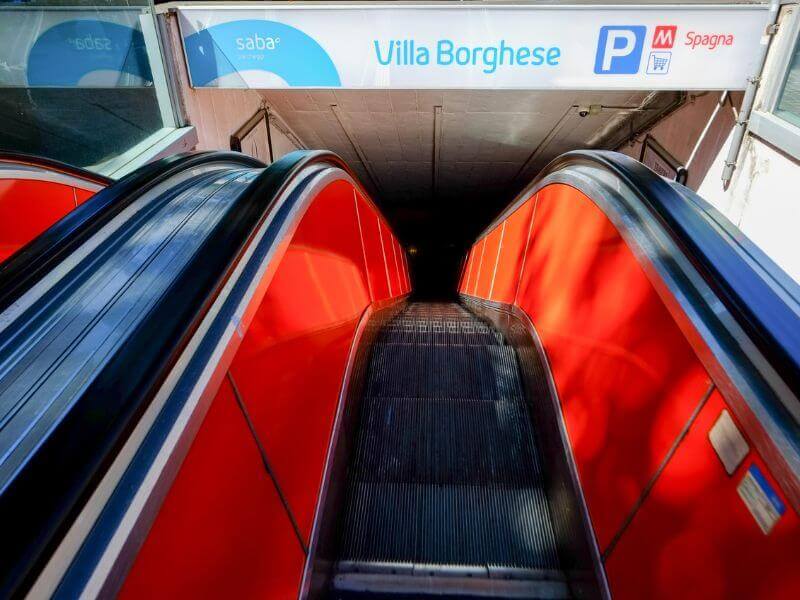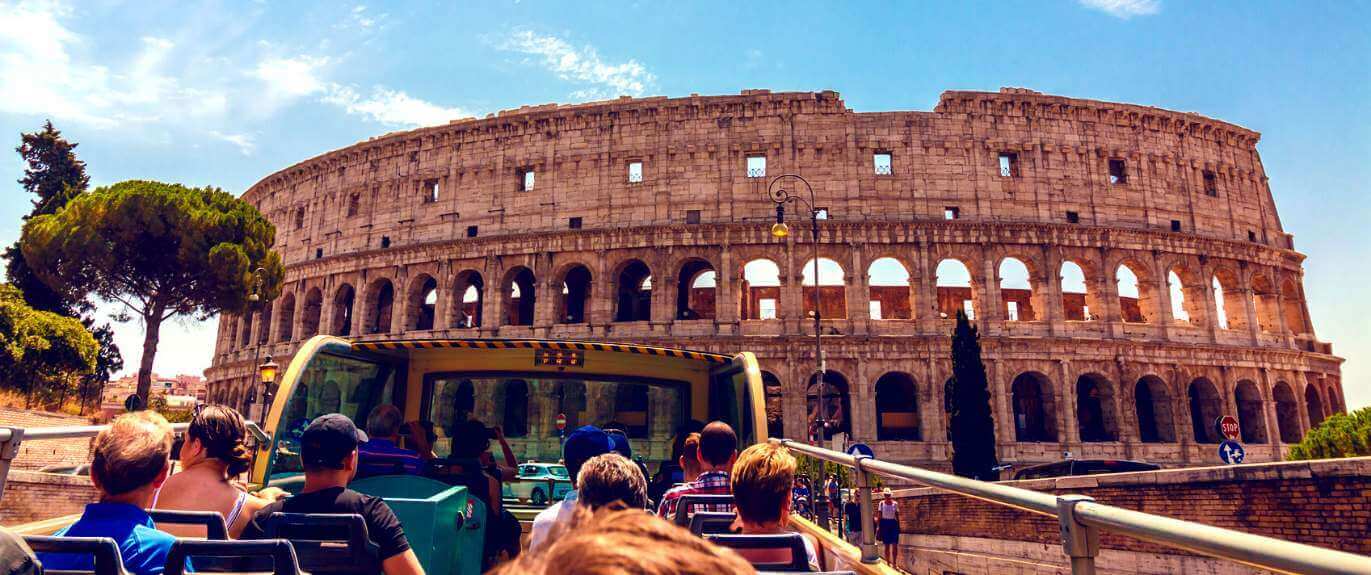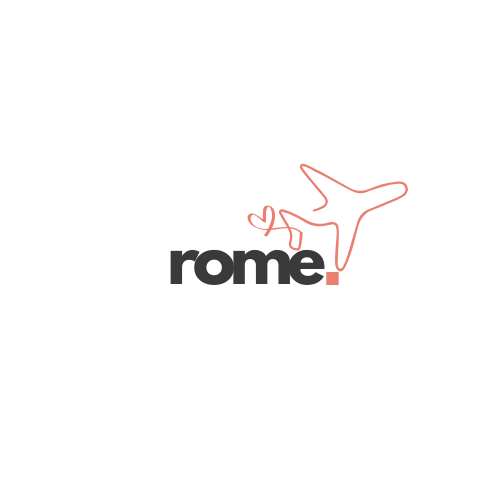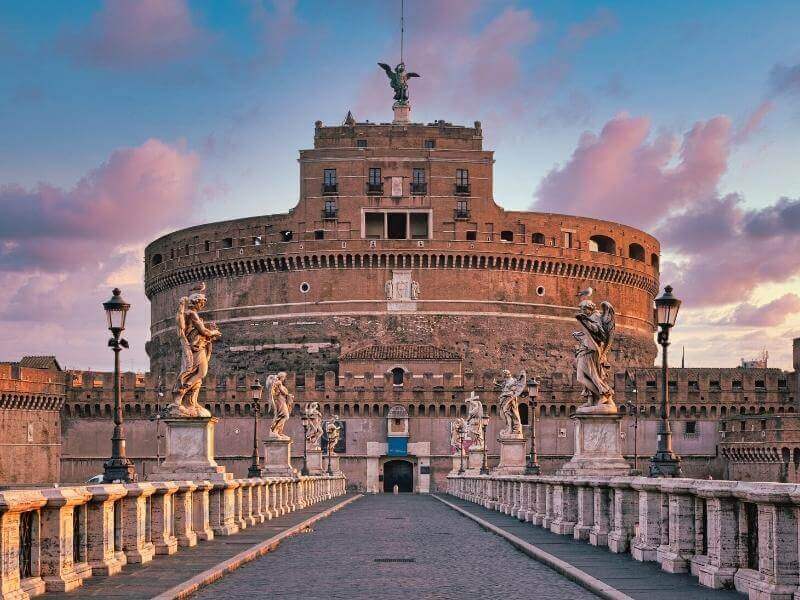Rome Metro Tickets - Maps, Prices & Info 2025

- - Updated on
Rome is known for its historic architecture and vibrant culture, and a well-developed public transportation network makes getting around this fascinating city possible.
Rome Metro tickets allow you to conveniently use the subway in Rome, as well as streetcars and buses.
There are different types of Rome tickets tailored to the needs of tourists and locals, including the popular day ticket.

Metro tickets can easily be purchased from subway station ticket machines or authorized sales points.
The wide range of public transportation options in Rome allows visitors to explore the city efficiently while enjoying its picturesque streets and impressive sights.
Author

Who’s writing here?
Hi there, fellow adventurers!
I’m Allie and I travel to Rome a lot! ♥️
Allie
Rome metro: These lines & stops are available
The Rome Metro currently comprises three main lines: Line A, Line B, and Line C. Each of these lines offers an easy and quick way to cross the city and reach important sights. An overview of all public transportation maps in Rome can be found here.

Line A (Orange Line)
Line A runs from northwest to southeast and connects important stops such as Ottaviano (near Vatican City), Spagna (near the Spanish Steps), and Anagnina.
This line is particularly useful for tourists as it covers many of the city’s most famous sights. It is one of the busiest lines and offers frequent connections, making it a reliable option for getting around Rome.

Line B (Blue Line)
Line B runs from northeast to southwest and connects central stops such as Colosseo (near the Colosseum) and Termini (the central station). It also has a branch line, B1, which runs north.
This line is particularly important for travelers who want to get from the central station to other parts of the city. Line B also offers connections to important business and residential areas, making it an essential line for commuters.
Line C (green line)
Line C is the newest and runs from east to west. It is still under construction but has already connected important stations such as San Giovanni and Lodi.
This line is continuously expanding and will cover more parts of the city in the future. Line C offers modern trains and stations that are often less crowded than older ones, making it a pleasant alternative.
Rome Metro Prices & Metro Tickets at a Glance
The public transportation system in Rome offers a variety of tickets tailored to different needs and travel durations. Here are the most essential ticket options in detail:
One-way ticket (BIT)
The one-way ticket costs €1.50 ($1.59) and is valid for 100 minutes. It allows you to use the subway, buses, and streetcars. You can change trains but only make one journey on the subway.
This ticket is ideal for short journeys within the city. It allows you to use a variety of public transportation to reach your destination.
Remember to validate the ticket before you start your journey to avoid a fine. Ticket validators are located in the subway stations, buses, and streetcars.
Day ticket (BIG)
The day ticket costs €7.00 ($7.32) and is valid from the first validation until midnight of the same day. It allows unlimited travel on all public transport in Rome, making it ideal for an intensive day of sightseeing.
This ticket is particularly useful for tourists who plan to visit many sights in one day. It offers a cost-effective and flexible way to explore the city without worrying about additional travel costs.
48-hour ticket
This ticket costs €12.50 ($13.10) and offers unlimited travel for 48 hours. It is particularly useful for weekend getaways or short breaks. The advantage of the 48-hour ticket is that it can be used for two full days from the first validation, giving you the flexibility to plan your trip as you wish.
It is ideal for travelers who want to explore Rome thoroughly without having to worry about constantly buying tickets.
72-hour ticket
The 72-hour ticket costs €18.00 ($18.83) and allows unlimited travel for 72 hours. It is ideal for longer stays and exploring the city at your leisure.
This ticket gives you three full days of unlimited access to all public transportation in Rome, making it the perfect choice for tourists who want to experience the city in depth. It is a cost-effective option for those who want to visit many different parts of the city.
Weekly ticket (CIS)
The weekly ticket costs €24.00 ($25.11) and is valid for seven days. It is ideal for longer stays and offers flexibility for commuters and tourists alike.
With this ticket, you can use public transport in Rome for a whole week without worrying about additional costs. It is ideal for business travelers or holidaymakers who are staying in Rome for a week or longer and want to use public transport regularly.
Use the metro in Rome with a City Card!
In addition to the Roma Pass, there are other Rome passes that combine access to public transport and sightseeing.
City passes such as the Turbopass or the Omnia Card offer additional benefits such as fast-track access to popular attractions and discounts in restaurants and stores.

Rome City Pass (Turbopass)
By far, the most popular discount card for Italy’s capital is the Rome city pass. You can buy the City Pass for one, two, three, four, five, or seven days and save a lot of money.
In addition to important tickets such as Colosseum tickets, you can also gain access to more than 12 of the city’s absolute highlights.
Pleasant benefits such as skip-the-line, an optional airport transfer, and hop-on, hop-off city tours are also included in the price.

Roma Pass
The Roma Pass offers access to public transport and many sights. It is available for 48 hours (€33.00)($34.53) or 72 hours (€53.00)($55.45).
With the Roma Pass, you can visit the first two sights free of charge and reduced admission to other attractions.
The Roma Pass is particularly practical, as it gives you access to transportation and the city’s cultural highlights. This makes it a valuable option for tourists who want to take full advantage of Rome’s infrastructure and culture.

Omnia Card
The Omnia Card is another popular option. It includes a 72-hour pass for public transportation and admission to the Vatican Museums and other major attractions. It costs €149.00 ($161.04) and offers great convenience and value for tourists.
The Omnia Card also gives you priority access to many attractions, saving you time and making your visit more enjoyable. This card is ideal for travelers who want a comprehensive experience in Rome and want to visit the city’s historical and religious sites.
Using a City Card, such as the Omnia Card or the Roma Pass, offers an all-in-one solution for your travel needs.
You don’t have to worry about buying separate tickets for transportation and attractions, which makes travel planning much easier.
These cards also have the advantage that they often include access to exclusive guided tours and events, making your trip even more enriching.
Hop-on hop-off buses offer an alternative to the metro in Rome
In addition to the metro, the hop-on hop-off in Rome offers another convenient way to explore the city. These buses run on fixed routes and stop at the city’s main sights. You can hop on and off at any stop, making them a flexible option for tourists.

Advantages of hop-on hop-off buses:
- Flexibility
- Great views
- Lots of information
You can create your own schedule and explore the city at your own pace. These buses offer different routes that cover all the main sights, so you can be sure not to miss anything.
These buses often offer great views of the city, especially from the open-top decks. You can enjoy the beauty of Rome from a different perspective and take great photos.
Many hop-on, hop-off buses offer audio commentaries in several languages, giving interesting information about Rome’s sights and history. These commentaries are often very informative and can help you better understand the significance of the various sights.
Hop-On Hop-Off buses are particularly useful for first-time visitors who want to get an overview of the city. They offer a stress-free way to get around and learn a lot about the city at the same time.
Tickets for these buses are often valid for 24 or 48 hours, giving you plenty of time to explore the city at your own pace.
Rome Metro ticket sales points
You can buy Rome Metro tickets at various locations in the city. Here are the most common points of sale in detail:
Ticket machines
The easiest and most convenient way to buy metro tickets is to use the ticket machines, which can be found in all metro stations. These machines are available in several languages and accept cash and credit cards.
They are easy to use and allow you to buy a ticket quickly without having to wait in long queues. The machines are available around the clock, making them a practical option for travelers who are on the move at unusual times.
Kiosks and tobacco shops
You can also buy your tickets at many kiosks and tobacco shops in the city. These outlets are particularly useful if you are outside the metro stations.
Many of these stores are strategically located near stops and attractions, making buying a ticket when you’re out and about easy. These stores often also sell other useful items for travelers, such as city maps and travel provisions.
Online and mobile apps
Some tickets can also be purchased online or via mobile apps, which offers additional flexibility. This is particularly convenient for those who want to buy their tickets in advance.
The apps allow you to save and validate your tickets directly on your smartphone, making the purchase process even easier and more convenient. This is a great option for tech-savvy travelers who want to manage their travel planning digitally.
This is the best way to get from the airport to Rome's city center:
Rome has two main airports: Fiumicino Airport (Leonardo da Vinci) and Ciampino Airport. Both airports are well connected to the city center. Here are the best ways to get from the airport to the city:
Fiumicino Airport:
There are several transportation options from Fiumicino Airport to the city:
Leonardo Express: The Leonardo Express is a direct train that connects Fiumicino Airport with Termini Central Station. The journey takes around 32 minutes and costs €14.00 ($14.65).
This train runs every 15 minutes and offers a fast and convenient connection to the city center. The Leonardo Express is a reliable option for travelers who want to get to the center of Rome quickly and without detours.
Regional trains: Cheaper regional trains connect the airport with various stations in Rome, including Tiburtina and Trastevere. These trains cost around €8.00 ($8.37).
Although they are slower than the Leonardo Express, they offer a cheaper alternative and are ideal for travelers on a budget.
Shuttle buses: Several shuttle buses connect the airport with the city center. These buses are a cheap and convenient option, especially if you have a lot of luggage or want to be taken directly to your hotel.
Ciampino Airport
There are also several transportation options from Ciampino Airport:
Shuttle buses: Numerous shuttle buses connect the airport with Termini Central Station. The journey takes around 40 minutes, costing between €4.00($4.19) and €6.00 ($6.28). These buses are convenient for travelers looking for a direct connection to the city center.
Regional trains: You can take a regional train to Termini from the nearby Ciampino station. A ticket costs around €1.50 ($1.57). This option is particularly cheap and offers a fast connection to the city center.
Cabs: Taxis are also available and offer a comfortable ride directly to your destination. A cab ride to the city center costs around €30.00 ($31.39).
Cabs are particularly useful if you have a lot of luggage or prefer a quick and direct connection to your hotel. But please be careful, as some cab drivers like to take advantage of tourists, especially those from the US.
Both airports offer a variety of transportation options, so you can choose the best option depending on your needs and budget. It is always advisable to plan ahead and book tickets online if necessary to save time and money.

Editor: Allie Hartmann
Hey and welcome to Rome-Tourist!
My name is Allie and I travel regularly to Rome, Italy.
On our Rome blog you will get valuable travel tips!
You may also be interested in these articles:


